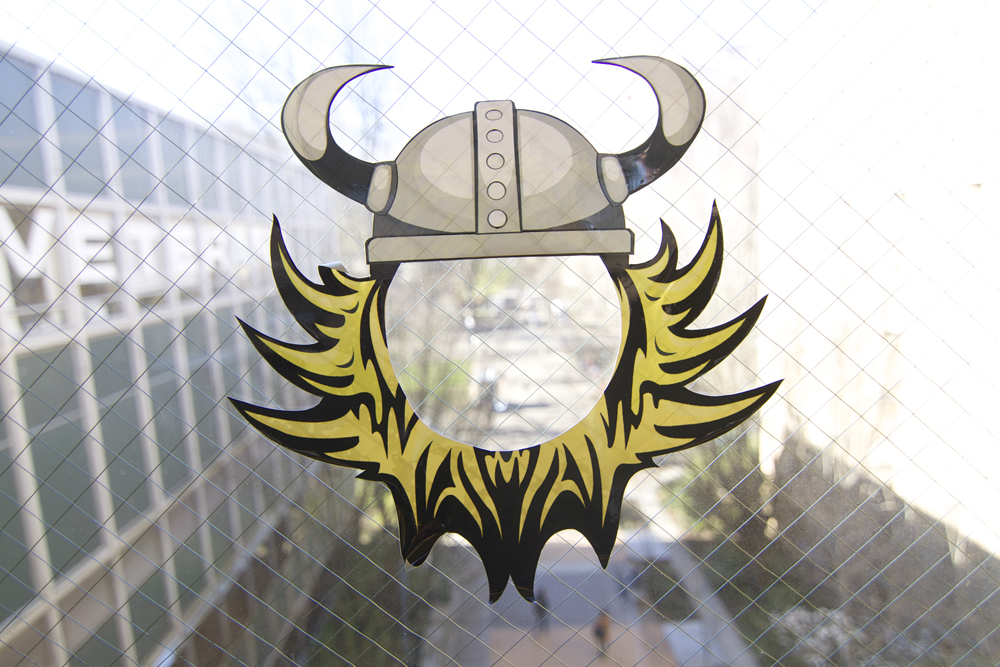Smoke signals
As any cigarette smoker knows, a good vice can be life enhancing. For that matter, any heroin addict probably knows it too, at least in the early stages of addiction. It makes it easier to get through those long blocks of boredom called “work” or “class” if you have a little treat waiting for yourself around the corner. As the clock ticks, in the back of your mind there’s the assurance that a pleasurable respite is nearly at hand. You come to take pleasure in controlling your addiction, doling it out at certain times and making yourself wait for the next allowance – or rather, in the illusion of controlling it. An addict is a willing slave to his substance of choice, whether it’s caffeine, nicotine, Chapstick or heroin. Who, other than the clientele of a dominatrix, knew slavery could be such fun?
Of course, cigarette smoking is, by necessity, a much more social vice than heroin. Instead of locking yourself in a public restroom and getting out the works, you cluster together with a number of your fellow smokers and enjoy 10 minutes of convivial gabbing, people-watching and – fresh air. It’s water-cooler talk with the added benefits of satisfied addiction. Cigarettes are also a much more socially acceptable vice than heroin, or at least they have been historically. That may be changing. The current political climate, here in Portland and throughout the state, doesn’t bode well either for Big Tobacco or for the nicotine zombies it serves. These days a group of smokers can look less like a stylish and sociable circle of humans sharing a break from schoolday woes than an embattled group of unsavory characters banding together against the hostile world around them.
That may sound a little melodramatic. But Oregon may well be close to joining its West Coast brethren, Washington and California, in adopting a statewide ban on smoking in public places. The issue was brought to the Legislature in 2005 and will likely pop up again next year. If the Legislature doesn’t act, the issue could end up as a ballot measure, put to a public vote, and there are more non-smokers than there are smokers. Locally, City Commissioner Dan Saltzman is expected to sign into law a smoking ban for our very own Pioneer Square as early as the end of this month. If, or more likely when, that ban goes into effect, anyone caught lighting up in “Portland’s Living Room” would first be banned from the square, then face jail time and a hefty fine. (Never mind that our jails all have “No Vacancy” signs posted.) And quite apart from legal action, Portland bars and restaurants have voluntarily been turning smoke-free, one by one, since the turn of the millennium. The laws and ballot measures we keep hearing about are only reflections of a general cultural trend.
Manufactured cigarettes first appeared in America in 1860, marketed to men as “little cigars.” By the 1920s tobacco companies were targeting women – the Marlboro brand, introduced in 1924, was originally marketed to women with the slogan “a cigarette that’s as mild as May.” As the age of cinema dawned, cigarettes became a glamorous prop in the hands of the stars, which filtered down into the masses as a totem of coolness. It’s amazing how quickly things have changed. In the ’70s it wasn’t unusual for your boss and various co-workers to smoke in the office where you worked. Today, someone lighting up in an office would probably trigger a smoke alarm and a mad rush out of the building. If you want to make a scene, try this: light up a cigarette the next time you’re in the cafeteria or the student lounge in the Smith Student Union during peak hours. See how long it takes people to react. And be sure to film it.
Interestingly, as one smokable substance has fallen from grace, another appears on a slow but sure course for legitimacy. That would be our fuzzy green friend, marijuana. In a complete reversal of attitudes toward cigarettes in American society, pot has come from outlawed, demonized status – you’ve all seen the hysterical propaganda films like 1936’s Reefer Madness, right? – to the verge of decriminalization in the space of two or three generations. Former City Council candidate Chris Iverson’s petition for a bill to make pot offenses the lowest priority for law enforcement in Portland may have failed in August of this year, but Iverson and his allies aren’t giving up the fight. They’ll probably come back stronger next year. A similar initiative passed in Seattle in 2003, and there’s little doubt it was the first step towards legalization. Is Portland next?
Whether the legalization of pot is entirely desirable or not is another question. With legalization will come regulation and taxation. If and when marijuana is granted full legal status as a publicly consumable substance, there’s no doubt the corporate entities that have had a decades-long field day with tobacco will take notice. Then what? Packets of individually rolled joints with a plethora of chemical additives available at the Plaid Pantry on the corner? That may not be the revolution we envisioned. In some ways, things aren’t so bad now. When police officers were asked about the Iverson petition earlier this year, their response was, “How could pot offenses be any less of a priority for us than they already are?” Even without the Iverson initiative, Portland’s policy toward pot is really “don’t ask, don’t tell.” The invisibility of marijuana today is a form of tolerance, whereas smoking has become ever more visible – and it’s a hostile visibility. Funny how things change.




